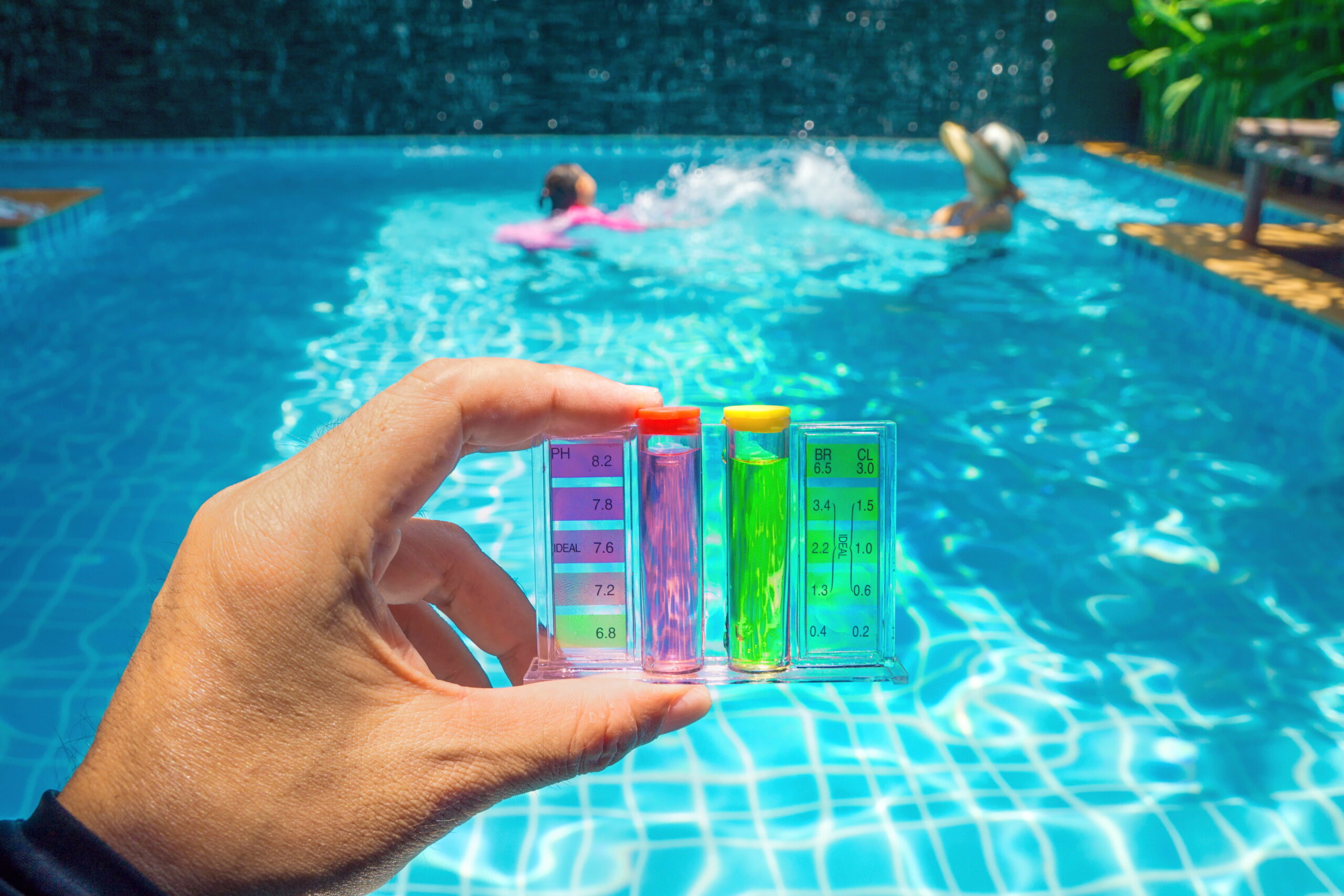
Managing the Chemical Levels in My Pool
While you don’t need a Chemistry degree to manage the chemical levels in your swimming pool, it does take some practice to get it right. Pool chemicals are interconnected: an unbalanced chemical can cause a chain reaction to the other chemicals, which also get out of sync. When the fine balance is found, the swimming pool water is clean and crystal clear for swimmers to enjoy their swim.
Because it can be tricky to keep chemical levels balanced, the best thing you can do is hire a swimming pool maintenance crew, who will balance your pool chemicals so that it’s safe and pleasant for you and your family to swim.
If you’d rather try balancing the chemicals yourself, there are five major chemicals to watch for. Let’s take a look at them and how they affect the swimming pool water.
pH
PH is a measure of how acidic or basic water is. Measurements under 7 mean the water is acidic. Measurements above 7 mean the water is basic.
The optimum pH level of swimming pool water is between 7.4 and 7.6. A high pH can cause skin rashes in swimmers and turns the water cloudy. A low pH can sting your eyes and corrode pool equipment.
Swimming pool pH varies depending on the number and frequency of swimmers, rain, and the balance of the other chemicals, particularly total alkalinity.
If you want to increase your pH to reach the optimal bracket, you can use sodium carbonate. To decrease your swimming pool pH, try adding muriatic acid to the water.
Total Alkalinity (TA)
Total alkalinity affects the water’s pH. The ideal TA should be between 80 to 120 ppm. Just like with pH balancing, you can use sodium bicarbonate to improve low alkalinity and muriatic acid to decrease high alkalinity.
When alkalinity is balanced, your water pH will also be at its optimal levels.
Chlorine
Chlorine is used to kill bacteria and algae that try to grow in your swimming pool water. They feed off of various contaminants that get into your pool, such as human skin cells, debris, pet hair, insects, leaves, and dust. Chlorine sanitizes your pool water and keeps it safe for you and your family to swim in.
Again, reaching the perfect balance is crucial. Too much chlorine can cause skin and eye irritations. Too little chlorine, and bacteria and algae will start building up in your swimming pool.
Interestingly enough, when water carries a strong smell of chlorine, then you need to add more chlorine. The smell probably comes from a combined form of chlorine called chloramines. It indicates the need to shock your pool to eliminate the combined chlorine, which can be achieved by adding more free chlorine.
The optimal level of chlorine is between 1 and 3 ppm.
Calcium Hardiness
Calcium hardness measures how hard or soft your swimming pool water is.
Hard water means there is too much calcium in your water. The calcium starts building up and forms a calcium scale near the waterline.
When the water is too soft, it corrodes the swimming pool equipment and the surfaces in search of calcium.
The ideal calcium hardness is 200 to 400 ppm. If you need to increase the calcium hardness, add in calcium chloride. If your calcium hardness is too high, you’ll have to pump out water and bring in new, clean water to dilute the level of calcium in the water.
Chlorine Stabilizer
Chlorine stabilizer, also called cyanuric acid, stops sunlight from breaking down the chlorine in the pool. Its optimal levels are 30 to 50 ppm. This is particularly helpful in the summer when sunlight can diminish the effectiveness of chlorine.
Do I Need to Remember All These Chemicals?
If you want to try balancing your chemical levels on your own, then yes, you need to remember all these chemicals, along with how to maintain the balance between them.
Since that can be very time-consuming, we suggest a much easier alternative: just give us a call, and we’ll maintain your swimming pool for you.
We can arrange for a weekly maintenance schedule: we will make sure your pool is safe and clean and ready for you to use with your family and friends.

